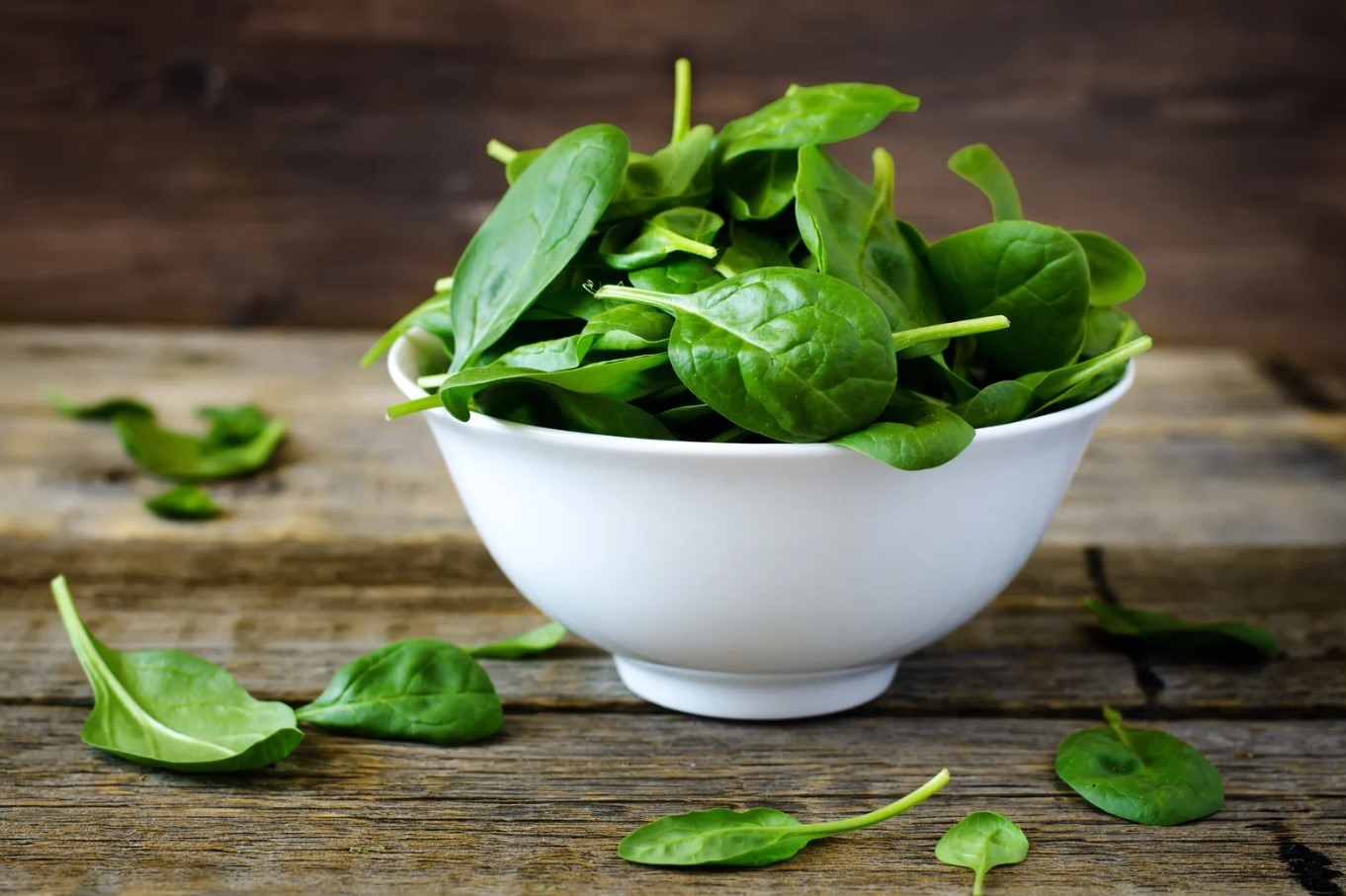Introduction To Spinach: The Wonder Leaf
Spinach, also known as the wonder leaf, is a leafy and green vegetable that is packed with essential vitamins and minerals. It belongs to the amaranth family and is considered one of the most nutrient-dense foods available. This superfood is native to ancient Persia and was later introduced to Mediterranean regions, where it became a popular ingredient in various dishes.
Nowadays, spinach is consumed all over the world and is known for its innumerable health benefits. It is an excellent source of vitamins A, C, and K, as well as iron, calcium, and potassium. These nutrients are essential for maintaining good health and promoting optimal body function.
- Vitamin A is important for maintaining healthy vision and promoting good immune function.
- Vitamin C acts as an antioxidant, protecting the body against damage caused by free radicals.
- Vitamin K is important for blood clotting and maintaining bone health.
- Iron is important for transporting oxygen throughout the body and preventing anemia.
- Calcium is essential for maintaining strong bones and teeth.
- Potassium plays a role in regulating blood pressure and promoting healthy heart function.

Spinach is also rich in antioxidants, which help protect the body against harmful free radicals that can cause cell damage and contribute to chronic disease. These antioxidants, coupled with its anti-inflammatory properties, make spinach an excellent food for reducing the risk of developing chronic diseases such as cancer, diabetes, and heart disease.
One of the best things about spinach is its versatility. It can be eaten raw or cooked, and can be incorporated into a variety of dishes. From salads to smoothies, spinach is an easy and delicious way to up your nutrient intake. Whether you’re looking to improve your overall health, lose weight or manage a specific health condition, spinach is a great addition to any diet.
| Nutrient | Amount per cup (30g) |
|---|---|
| Calories | 7 |
| Protein | 0.9g |
| Fat | 0.1g |
| Carbohydrates | 1.1g |
| Fiber | 0.7g |
| Vitamin A | 56% of the Daily Value (DV) |
| Vitamin C | 14% of the DV |
| Vitamin K | 181% of the DV |
| Iron | 5% of the DV |
| Calcium | 2.9% of the DV |
| Potassium | 6% of the DV |
Overall, spinach is a nutritional powerhouse that offers numerous health benefits. Its high nutrient content, combined with its versatility, makes it an excellent addition to any meal.
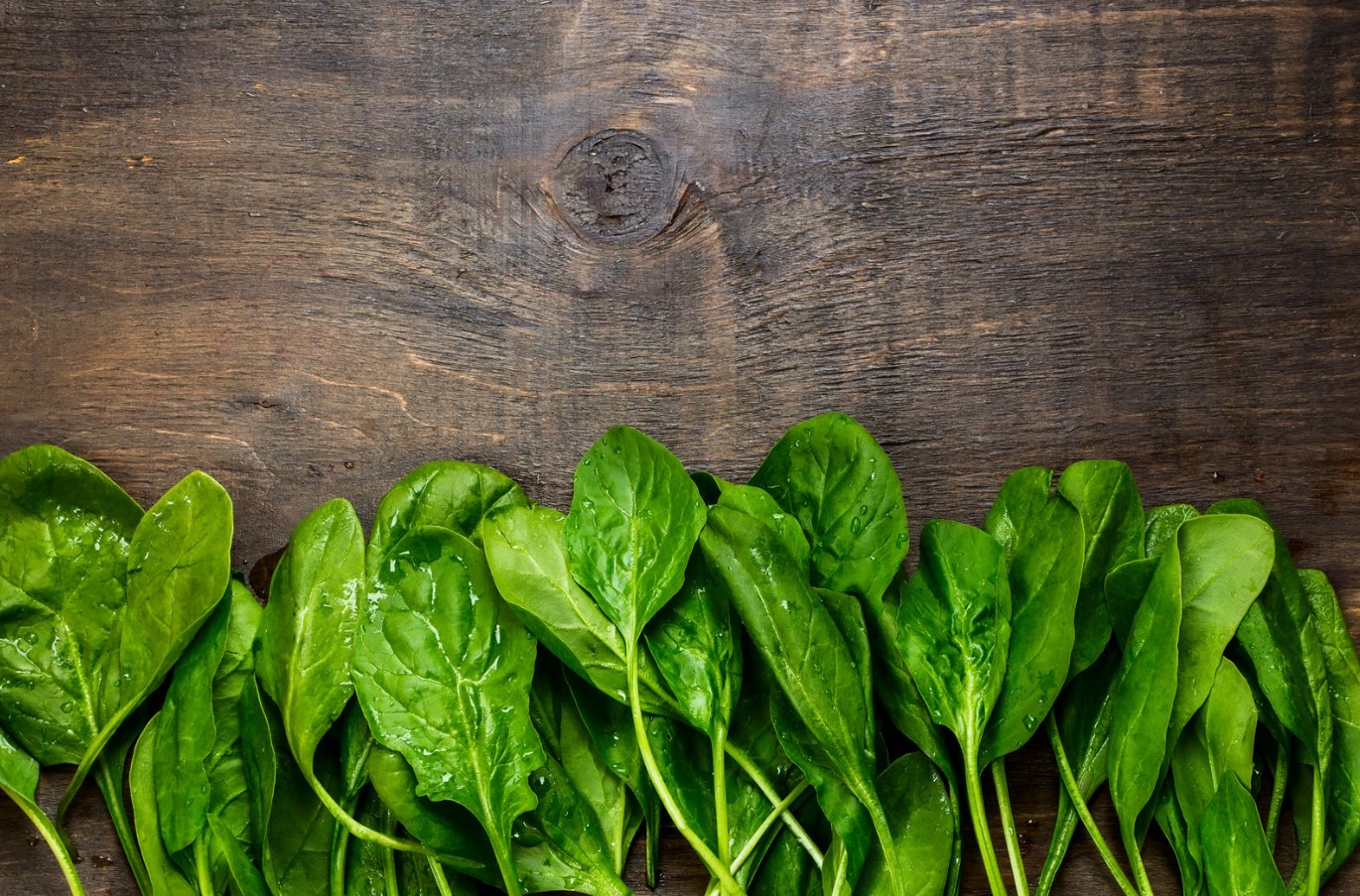
Nutritional Value Of Spinach: Packed With Vitamins And Minerals
Spinach is a leafy green vegetable that is packed with nutrients. In fact, eating spinach regularly can provide you with a wealth of vitamins and minerals that are essential for optimal health. Spinach is low in calories and high in nutrients, making it a great food to include in your diet.
One of the most significant nutritional benefits of spinach is its high vitamin and mineral content. Spinach is a good source of vitamin A, iron, vitamin C, vitamin K, magnesium, and folate. Vitamin A is essential for healthy vision, while iron is important for healthy blood function. Vitamin C helps to boost the immune system, while vitamin K is essential for bone health. Magnesium is important for muscle function, and folate is crucial during pregnancy for optimal fetal development.
- Spinach is also a good source of antioxidants, which are compounds that help to protect the body from damage caused by free radicals. Free radicals are molecules that can damage cells and contribute to disease. Antioxidants help to neutralize these molecules, reducing the risk of chronic diseases like heart disease and cancer.
- In addition to its antioxidant content, spinach is also high in fiber. Fiber is important for healthy digestion, as it helps to keep the digestive system moving smoothly. Eating foods that are high in fiber can also help to reduce the risk of developing chronic diseases like diabetes and heart disease.
Spinach is also low in calories, making it a great food for those who are looking to lose weight or maintain a healthy weight. Because it is low in calories but high in nutrients, spinach can help you feel full and satisfied without overeating.
| Nutrient | Amount per 100g |
|---|---|
| Vitamin A | 56% RDA |
| Vitamin C | 18% RDA |
| Vitamin K | 460% RDA |
| Iron | 12% RDA |
| Magnesium | 6% RDA |
| Folate | 15% RDA |
| Fiber | 2.2g |
| Calories | 23 |
Overall, spinach is an incredibly nutritious food that is packed with vitamins, minerals, and antioxidants. Including spinach in your diet can help to boost your health and reduce the risk of chronic diseases. So why not add some spinach to your next meal?
Health Benefits Of Spinach: From Stronger Bones To Better Eyesight
Spinach may be a humble leaf, but it has a lot of amazing health benefits to offer. From strong bones to better eyesight, spinach is a superfood that can help you stay fit and healthy in many ways. In this blog post, we will explore the various health benefits of spinach and why you should consider adding it to your diet.
One of the most impressive health benefits of spinach is its ability to strengthen bones. Spinach contains high amounts of potassium, magnesium, and calcium which are essential for building and maintaining strong bones.
- Potassium: Helps prevent bone loss and maintains bone density.
- Magnesium: Improves bone mineral density and helps prevent osteoporosis.
- Calcium: Strengthens bones and prevents fractures.
Another health benefit of spinach is its ability to improve eyesight. Spinach is rich in lutein and zeaxanthin, two antioxidants that can protect your eyes from age-related macular degeneration (AMD) and cataracts.
| Nutrient | Amount per 100g |
|---|---|
| Lutein | 12.2mg |
| Zeaxanthin | 5.6mg |
Spinach is also beneficial for your heart health. It contains high levels of nitrates which can help lower blood pressure and improve blood flow. Additionally, spinach is low in calories and high in fiber which can help you maintain a healthy weight and reduce your risk of heart disease.
- Low in calories: 23 calories per 100g.
- High in fiber: 2.2g per 100g.
Finally, spinach is a great source of vitamin K. This vitamin is essential for blood clotting and bone health. A deficiency in vitamin K can increase your risk of fractures and osteoporosis.
In conclusion, spinach is a nutritious leafy green that can offer many health benefits. From stronger bones to better eyesight, spinach is a superfood that should be a regular part of your diet. Try incorporating spinach into your meals by adding it to salads, smoothies, or sautéing it as a side dish.
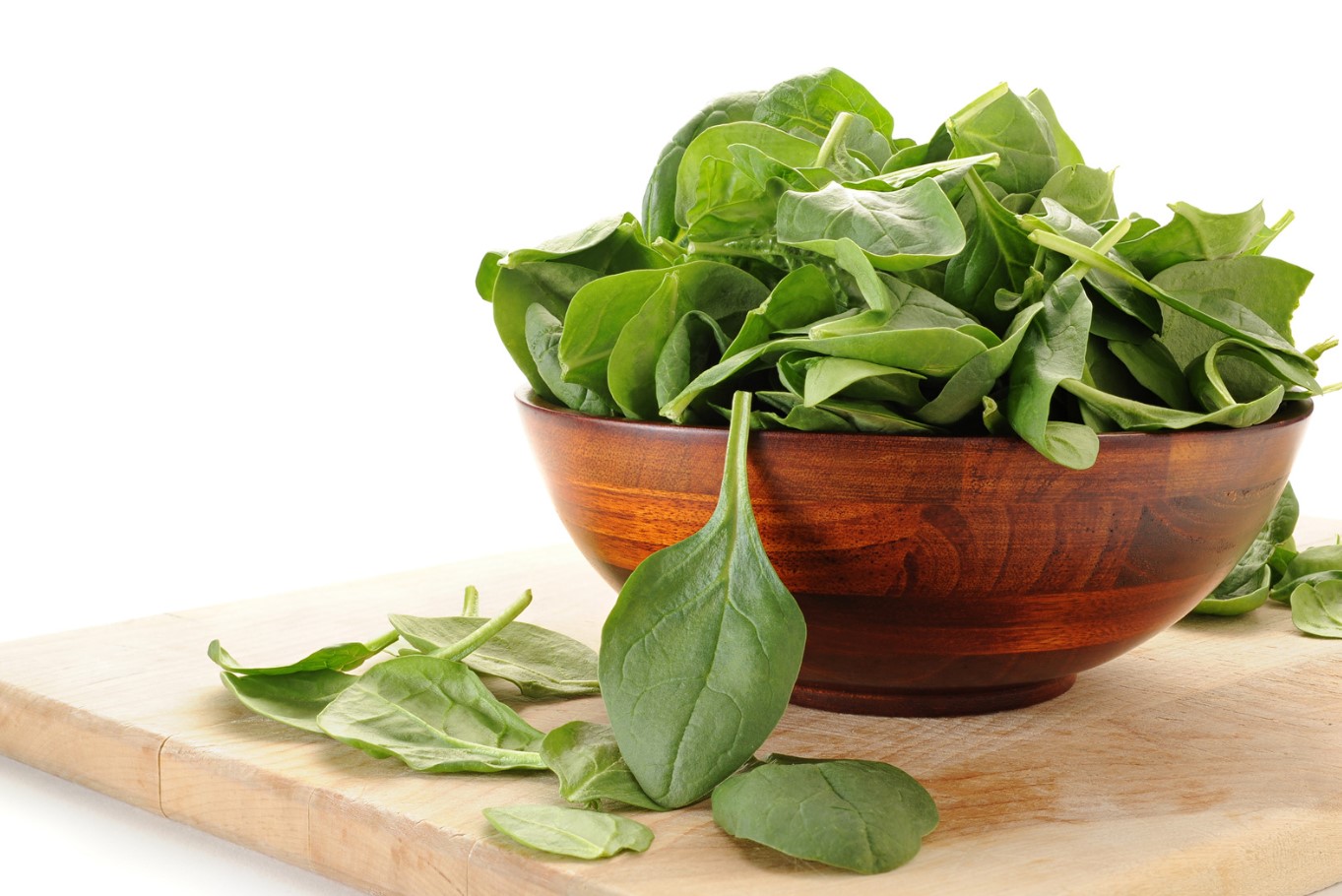
Spinach For Weight Loss: A Smart Addition To Your Diet
Spinach is a wonder leaf that is packed with a plethora of vitamins and minerals. Eating spinach is one way to boost your overall health, and it can also be an excellent addition to your weight loss diet. This leafy green is low in calories and high in fiber, which allows you to eat more and feel fuller for longer. In this post, we discuss why spinach is a smart addition to your weight loss diet and how you can incorporate it into your meals.
Spinach is often referred to as a superfood, and for a good reason. This leafy green is incredibly nutritious and has numerous health benefits. It is low in calories and high in fiber, making it an excellent food choice for those looking to lose weight. Spinach is also loaded with vitamins such as vitamin A, vitamin C, vitamin K, and folate. The minerals present in spinach include iron, calcium, and magnesium. All these nutrients work together to improve your overall health and well-being.
- Spinach is low in calories and high in fiber, which makes it an excellent addition to a weight loss diet.
- It is loaded with vitamins and minerals that help improve your overall health.
- Spinach is also high in antioxidants, which can protect your body from cell damage.
- You can easily incorporate spinach into your meals by adding it to smoothies, salads, or omelets.
One of the key benefits of eating spinach for weight loss is that it is low in calories. A cup of spinach only contains around 7 calories, making it an excellent food choice for those watching their calorie intake. Furthermore, spinach is high in fiber, which helps you feel fuller for longer. This means you can eat more spinach and still stay within your calorie limit, helping you lose weight.
To incorporate spinach into your weight loss diet, you can add it to your smoothies. Spinach blends well with various fruits, and you won’t even notice the taste. You can also add spinach to your salads, soups, and omelets for a nutritious and filling meal. If you’re not a fan of the taste of raw spinach, try sautéing it with some garlic and olive oil. This will give it a delicious flavor while still being healthy.
| Nutrient | Amount per 100g |
|---|---|
| Calories | 23 |
| Protein | 2.9g |
| Fat | 0.4g |
| Carbohydrates | 3.6g |
| Fiber | 2.2g |
| Vitamin A | 394% of the RDI |
| Vitamin C | 34% of the RDI |
| Vitamin K | 460% of the RDI |
| Iron | 21% of the RDI |
| Calcium | 10% of the RDI |
| Magnesium | 19% of the RDI |
Conclusion
Spinach is a nutrient-dense food that can be an excellent addition to your weight loss diet. Its low-calorie count and high fiber content make it an excellent choice for those looking to lose weight. The vitamins and minerals present in spinach also offer numerous health benefits. You can incorporate spinach into your meals easily by adding it to smoothies, salads, or omelets. Whether you’re trying to lose weight or improve your overall health, spinach is an excellent food choice.
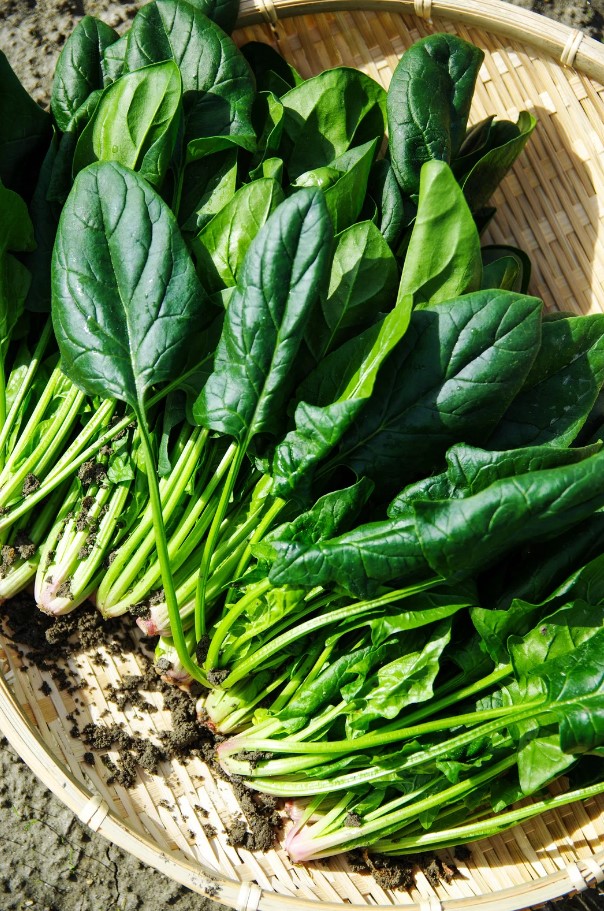
Spinach For Diabetics: A Great Food For Blood Sugar Control
Spinach is a great food option for individuals with diabetes as it is low in carbohydrates and high in essential vitamins and minerals. Consuming spinach can help regulate blood sugar levels and improve overall health. In this blog post, we will explore the specific benefits of spinach for individuals with diabetes and share some delicious ways to incorporate it into your diet.
Nutritional Value of Spinach
- Spinach is a powerhouse of nutrients, including vitamins A, C, and K, iron, and potassium.
- It is also low in carbohydrates, making it an ideal food option for individuals with diabetes. Half a cup of cooked spinach contains only 3.5 grams of carbohydrates.
Health Benefits of Spinach for Diabetics
- Spinach contains alpha-lipoic acid, an antioxidant that has been shown to lower glucose levels and increase insulin sensitivity.
- It also contains fiber, which helps regulate blood sugar levels and prevents post-meal blood sugar spikes.
- Spinach is low in calories, making it a great addition to a weight loss diet for individuals with diabetes who also struggle with obesity.
Ways to Incorporate Spinach into Your Diet
If you’re looking for ways to add spinach to your diet, here are a few delicious ideas:
| Meal | Spinach Serving Idea |
|---|---|
| Breakfast | Add spinach to an omelet or smoothie. |
| Lunch | Use spinach as the base for your salad or add it to a wrap or sandwich. |
| Dinner | Add spinach to your pasta dishes or use it as a side dish. |
Conclusion
If you have diabetes, incorporating spinach into your diet can have a positive impact on your blood sugar control and overall health. Spinach is a nutrient-dense leafy green that is easy to incorporate into meals and snacks. Whether you choose to add spinach to a smoothie or use it as a base for your salad, this wonder leaf is sure to boost your health and well-being.
Spinach For Pregnant Women: How It Boosts Fetal Development
Spinach is a leafy green vegetable that is packed with important nutrients. Pregnant women especially can benefit from incorporating spinach into their diets because it provides a range of essential vitamins and minerals that promote fetal development.
One of the key benefits of spinach for pregnant women is that it is a rich source of folate, a B-vitamin that plays a crucial role in the development of the nervous system. Adequate folate intake during pregnancy can reduce the risk of birth defects such as spina bifida and anencephaly. Spinach is also a good source of iron, which helps to form red blood cells and prevent anemia during pregnancy.
- Spinach is also rich in vitamin A, which is important for healthy vision, skin, and immune function.
- Additionally, it contains vitamin K, which is essential for blood clotting and bone health.
Consuming spinach during pregnancy can also help to regulate blood sugar levels, as it contains a compound called alpha-lipoic acid that has been shown to improve insulin sensitivity. This can be especially beneficial for women with gestational diabetes or those at risk for developing diabetes later in life.
| Nutritional Value of Spinach Per 100g | |
|---|---|
| Calories | 23 |
| Protein | 2.9g |
| Carbohydrates | 3.6g |
| Fat | 0.4g |
| Fiber | 2.2g |
| Folate | 194mcg |
| Iron | 2.7mg |
| Vitamin A | 9377IU |
| Vitamin K | 482.9mcg |
There are many ways to incorporate spinach into your diet during pregnancy. Add spinach to a smoothie, salad or omelette, or sauté it as a side dish. Just be sure to wash the leaves thoroughly before using, as spinach can often harbor bacteria or pesticides.
In conclusion, spinach is an excellent choice for pregnant women who want to support fetal development and maintain overall health. With its high levels of important vitamins and minerals, it is a natural choice for a healthy pregnancy diet.
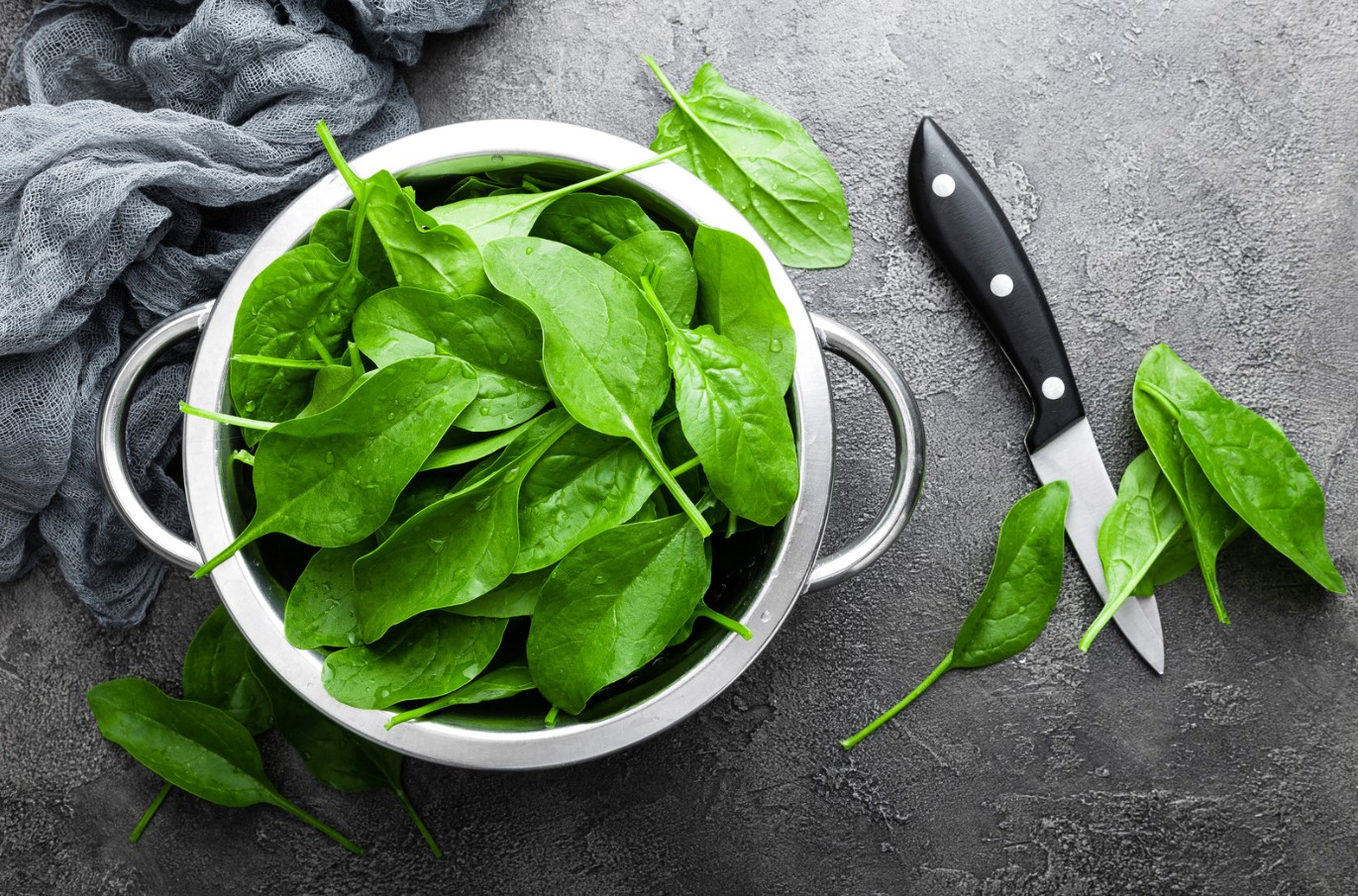
Spinach Recipes: Delicious Ways To Incorporate Spinach İnto Your Meals
Spinach is one of the most beloved leafy greens that is not only nutritious but also versatile. Whether you love it raw, cooked, or blended in a smoothie, spinach adds a tasty twist to any recipe. Here are some delicious ideas for incorporating spinach into your meals:
- Spinach and Feta Stuffed Chicken: Mix some chopped spinach with feta cheese, garlic, and olive oil. Stuff this mixture into chicken breasts, bake until golden brown, and enjoy a juicy and flavorful meal.
- Spinach Smoothie: Blend together some spinach, almond milk, banana, and a scoop of protein powder for a quick and healthy breakfast or snack.
- Spinach Salad: Toss some fresh spinach with sliced strawberries, almonds, and balsamic vinaigrette for a refreshing and colorful salad.
- Spinach and Mushroom Pizza: Top a whole-wheat pizza crust with tomato sauce, sautéed mushrooms, spinach, and mozzarella cheese. Bake until crispy, and enjoy a guilt-free pizza night.
In addition to these classic dishes, spinach can also be used in dips, quiches, omelets, and even smoothie bowls. With its rich flavor and versatile texture, spinach is a great addition to any meal, regardless of your dietary preferences.
| Nutrient Content | Amount per 100g |
|---|---|
| Calories | 23 kcal |
| Protein | 2.9 g |
| Fat | 0.4 g |
| Carbohydrates | 3.6 g |
| Fiber | 2.2 g |
| Vitamin A | 56% of the RDI |
| Vitamin C | 14% of the RDI |
| Vitamin K | 460% of the RDI |
| Iron | 15% of the RDI |
Spinach is not only delicious but also incredibly nutritious. It is rich in vitamins A, C, K, and iron, as well as other antioxidants that promote good health. By incorporating spinach into your meals, you can improve your overall diet and enjoy the many benefits of this leafy green.
History Of Spinach: From Ancient Persia To Popeye’s Favorite Superfood
Spinach has always been considered a superfood, owing to its plethora of health benefits. However, not many people know about its fascinating history that dates back to ancient times.
Spinach, scientifically known as Spinacea oleracea, is believed to have originated in ancient Persia, now known as Iran. The earliest known record of spinach cultivation can be traced back to around the 4th century A.D. The ancient Persians, who were known for their love for vegetables, used spinach in a variety of dishes, including stews, soups, and bread.
During the medieval period, spinach was introduced to Europe through the Mediterranean region. It became a popular ingredient in the cuisine of Spain and Italy, where it was often used to prepare savory tarts and pies.
In the 16th century, spinach made its way to the New World through Spanish colonizers. The first-known documentation of spinach in the United States dates back to the 1800s.
- Spinach was not always the favorite vegetable that it is today. In fact, it was once considered a weed in some parts of Europe and was mainly grown for medicinal purposes.
- It was in the early 20th century that spinach gained immense popularity in America, thanks to the timeless cartoon character, Popeye the Sailor Man. Popeye’s iconic portrayal of spinach as a source of strength and energy led to a surge in spinach consumption in the US, making it one of the most beloved vegetables.
| Spinach Variety | Description |
|---|---|
| Savoy Spinach | Has curly and crinkled leaves, which gives it a springy and bouncy texture. |
| Flat or Smooth-Leaf Spinach | Has broad, smooth, and flat leaves that are easier to clean. |
| Semi-Savoy Spinach | Is a hybrid variety, which is a cross between savoy and flat-leaf spinach. |
Today, spinach remains a popular and versatile leafy green that can be enjoyed in a variety of ways. From salads and smoothies to pasta dishes and soups, spinach is a nutritious and delicious addition to any meal.
In conclusion, spinach has come a long way from being a medicinal herb to popular superfood that is loved by millions. Its journey from ancient Persia to becoming Popeye’s favorite superfood is a testament to its versatility, nutritional value, and culinary appeal.
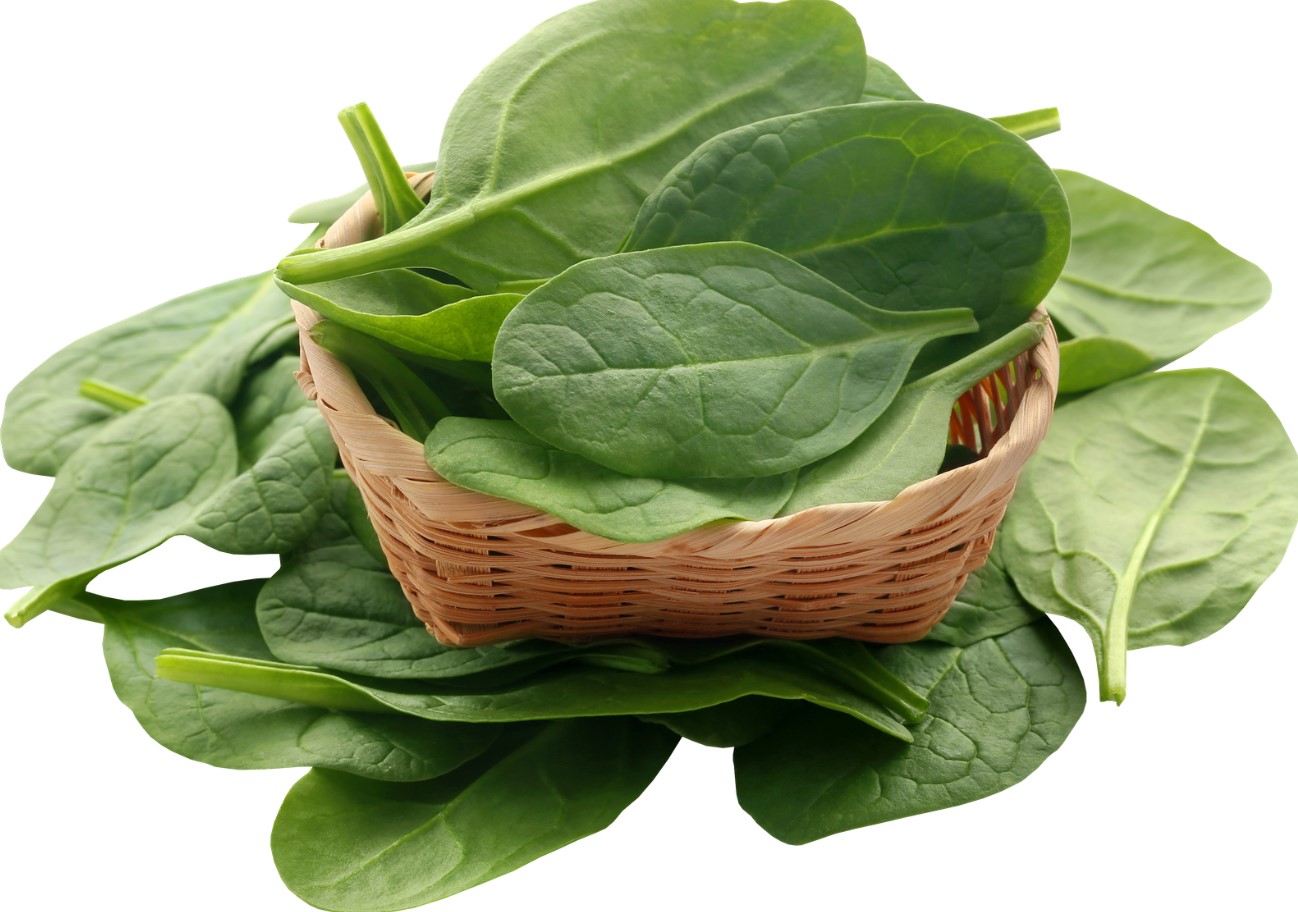
Spinach Farming: The Basics Of Cultivation And Harvesting
Spinach farming is a popular agricultural practice worldwide, with multiple health benefits associated with it. Spinach, being rich in nutrients essential for health, is an excellent addition to any diet. However, to get the best spinach produce, farmers must understand the farming process, from cultivation to harvesting.
One of the basics of spinach farming is understanding the best cultivars to grow. Different spinach varieties have varying requirements, including soil, nutrient needs, and sunlight exposure. For instance, savoy spinach requires moist soil, while other varieties like flat spinach prefer well-drained soils.
- It’s also essential to prepare the soil before planting spinach. Spinach grows in soils with pH levels between 6.5 and 7.5. Farmers will need to amend the soil to fit these requirements by adding soil additives like organic matter, lime, and other minerals.
- Spinach is a cool-weather crop that thrives best in temperatures between 50°F to 70°F, which means it is ideal for planting in early spring or late summer. Farmers should plant spinach seeds one inch apart and one inch deep, ensuring there is adequate spacing for easy harvesting.
- Afterward, spinach seedlings require watering for germination, during which the farmer should maintain soil moisture levels. As the plants grow, the water requirements decrease, but the soil should not dry out completely to ensure maximum spinach seedling growth.
At maturity, spinach leaves are typically harvested into bunches, which are then either sold fresh or processed for use in various food products. Most farmers use a harvesting tool that cuts the spinach bunches at the soil line to minimize damage to the leaves.
| Harvesting Techniques | Pros | Cons |
|---|---|---|
| Hand Harvesting | Minimizes damage to the leaves, excellent for organic or small-scale farming. | Slow and labor-intensive method for large-scale farming. |
| Machine Harvesting | Cuts and cleans spinach leaves, quick and efficient for large-scale farming. | May damage some leaves reducing quality and shelf life of harvest, not suitable for organic farming. |
In conclusion, spinach farming has numerous benefits, including high yields, minimal investment costs, and better soil quality. Farmers need to follow the planting procedures strictly and provide regular farm care to ensure the best produce. Handpicking spinach is ideal for small-scale or organic farming, while machine harvesting is suitable for large-scale farming. Understanding the basics of spinach farming will enable farmers to cultivate their crops optimally and get the best produce.
Types Of Spinach: A Guide To Different Varieties
Spinach is a leafy green vegetable that is loaded with nutrients and can be eaten both raw and cooked. While most people are familiar with the common type of spinach found in grocery stores, there are actually several different varieties of spinach that you may not be aware of. In this blog post, we will provide a guide to the different types of spinach.
-
- Savoy Spinach
Savoy spinach is characterized by its crinkly and curly leaves. This variety of spinach has a slightly bitter taste and is often used in salads, sautéed as a side dish or added to soups.
-
- Flat-Leaf Spinach
Also known as smooth-leaf or flat spinach, this type of spinach has a more delicate texture than savoy spinach. It has a slightly sweet flavor and is great for adding to smoothies or using in salads. Flat-leaf spinach is the most common variety found in stores.
-
- New Zealand Spinach
New Zealand spinach is a unique variety that grows well in hot weather. The leaves are thick and slightly rubbery, making them perfect for stir-fries or sautéing. This type of spinach has a milder taste than other varieties.
-
- Bloomsdale Spinach
Bloomsdale spinach is similar to savoy spinach in appearance, but has a sweeter and more delicate flavor. It is often used in salads or cooked as a side dish. This type of spinach is more difficult to grow and is not as widely available in stores.
There are also hybrid varieties of spinach that have been developed for specific purposes, such as baby spinach which is harvested when the leaves are still small and tender. No matter which variety of spinach you choose, you can be sure that you are getting a nutrient-packed leafy green that is great for your health.
| Type of Spinach | Characteristics | Taste | Best Use |
|---|---|---|---|
| Savoy Spinach | Curly and crinkly leaves | Slightly bitter | Salads, sautéed, soups |
| Flat-Leaf Spinach | Smooth and delicate leaves | Slightly sweet | Smoothies, salads |
| New Zealand Spinach | Thick and rubbery leaves | Mild | Stir-fries, sautéing |
| Bloomsdale Spinach | Similar to savoy spinach, but sweeter | Sweet and delicate | Salads, side dish |
Now that you know the different varieties of spinach available, you can experiment with incorporating them into your meals. Whether you prefer your spinach in a salad or cooked as a side dish, you can enjoy the many health benefits that this leafy green provides.
How To Store Spinach: Tips For Keeping It Fresh And Crisp
Spinach is a nutritious leafy green vegetable that can be added to a variety of dishes, from salads and sandwiches to smoothies and dips. However, to enjoy the benefits of this vegetable, it’s important to keep it fresh and crisp. Here are some tips on how to properly store your spinach:
- Wash and dry the spinach leaves. Before storing spinach, it’s important to wash the leaves thoroughly to remove any dirt or debris. Soak the leaves in a bowl of cold water for a few minutes, then rinse them under running water. Dry the leaves using paper towels or a salad spinner.
- Wrap the spinach in a paper towel. Once the leaves are dry, wrap them in a layer of paper towel to absorb any excess moisture. This will help prevent the leaves from getting slimy or wilted.
- Store the spinach in an airtight container. Place the wrapped spinach leaves in an airtight container, such as a plastic container or a resealable bag. Make sure to press out any excess air before sealing the container.
- Store the spinach in the fridge. Finally, store the container of spinach in the fridge, preferably in the vegetable drawer. The cool temperature will help keep the leaves fresh and crisp for a longer period of time.
By following these tips, you can keep your spinach fresh and vibrant for up to a week. Remember to check the leaves regularly and discard any that have started to wilt or turn yellow. Fresh spinach not only tastes better, but it’s also packed with essential vitamins and minerals that can benefit your health in many ways.
Spinach Vs Kale: Which One İs Healthier?
Are you torn between choosing spinach or kale as your go-to leafy green? Don’t worry, you’re not alone. Both spinach and kale have been dominating the superfood scene in recent years, but which one has the upper hand in terms of health benefits? Let’s dive in and compare the nutritional value of spinach and kale to see which one comes out on top.
Spinach:
- Packed with vitamins A, C, K, and folate, spinach is a powerhouse of nutrients that can boost your immune system, improve bone health, and support healthy fetal development during pregnancy.
- Spinach is also rich in iron, which is essential for oxygen transport and energy production in the body.
- In addition to its nutritional value, spinach has also been linked to a reduced risk of chronic diseases, such as heart disease and cancer, due to its high antioxidant content.
Kale:
- Kale is also rich in vitamins A, C, K, and folate, but it has an edge over spinach in terms of iron content.
- Kale is also a great source of calcium, which is important for bone health and muscle function.
- Similar to spinach, kale’s high antioxidant content has been linked to a decreased risk of chronic diseases such as heart disease and cancer.
So, which one is healthier?
| Nutrient | Spinach | Kale |
|---|---|---|
| Vitamin A | 56% DV | 206% DV |
| Vitamin C | 14% DV | 134% DV |
| Vitamin K | 181% DV | 684% DV |
| Folate | 49% DV | 19% DV |
| Iron | 15% DV | 6% DV |
| Calcium | 10% DV | 9% DV |
It’s clear that both spinach and kale have their unique set of nutritional benefits, but ultimately, it depends on your personal preferences and dietary needs. If you’re looking for a leafy green with more iron and calcium content, kale may be the winner for you. However, if you want a high dose of vitamin K and folate, spinach should be your go-to. In the end, both of these superfoods can be a great addition to a healthy diet!
Spinach Myths: Debunking Common Misconceptions About This Leafy Green
Spinach is commonly known as a superfood owing to its rich nutritional properties that offer numerous health benefits. However, there are still several myths and misconceptions associated with spinach. In this blog post, we will debunk some of the most common myths about this leafy green.
Myth 1: Spinach is high in iron.
Many people believe that spinach is a great source of iron, thanks to the popular cartoon character Popeye, who would eat spinach to get stronger. While it is true that spinach does contain iron, it’s not as much as you might think. In fact, spinach contains a compound called oxalate, which can inhibit the absorption of iron in your body. Therefore, it’s important to pair spinach with other iron-rich foods to get the most benefit.
Myth 2: Eating spinach raw is the best way to consume it.
While raw spinach is healthy, it’s not the only way to consume this leafy green. In fact, cooking spinach can actually increase the availability of certain nutrients, such as vitamin A and calcium. Additionally, cooking spinach can help break down the compounds that inhibit the absorption of iron.
Myth 3: Spinach is high in oxalates, which can lead to kidney stones.
While it is true that spinach contains oxalates, which can contribute to kidney stones in some individuals, it’s important to note that many foods, including nuts, berries, and even chocolate, also contain oxalates. Additionally, studies show that consuming moderate amounts of spinach is unlikely to cause kidney stones in healthy individuals.
Myth 4: Spinach is a good source of protein.
While spinach does contain some protein, it’s not a significant amount. In fact, a cup of spinach contains just 0.9 grams of protein, compared to the recommended daily intake of around 56 grams for men and 46 grams for women. Therefore, it’s important to pair spinach with other protein-rich foods to get the most benefit.
In conclusion, spinach is a nutritious leafy green that offers numerous health benefits. While there are some myths and misconceptions associated with spinach, it’s important to consume this superfood in moderation and pair it with other nutrient-rich foods for optimal health.
Spinach Smoothies: A Great Way To Get Your Daily Dose Of Greens
Spinach Smoothies: A Great Way To Get Your Daily Dose Of Greens
Are you tired of eating spinach in salads, sandwiches, and omelets? If yes, then it’s time to try something new and exciting – spinach smoothies! Spinach is a nutrient-dense leafy green that is packed with vitamins, minerals, antioxidants, and fiber. It’s an excellent addition to any diet, and when combined with other fruits and vegetables in a smoothie, it creates a delicious and healthy drink that can be enjoyed at any time of the day.
- Benefits of Spinach
Spinach is a superfood that is low in calories but high in nutrients. One cup of raw spinach contains:
| Nutrient | Amount |
|---|---|
| Vitamin A | 56% of the Daily Value |
| Vitamin K | 181% of the Daily Value |
| Folate | 15% of the Daily Value |
| Vitamin C | 14% of the Daily Value |
| Iron | 5% of the Daily Value |
Spinach is also loaded with other essential nutrients like calcium, magnesium, potassium, and vitamin E. It has anti-inflammatory properties that help in reducing the risk of chronic diseases like heart disease, diabetes, and cancer.
- How to Make a Spinach Smoothie
There are countless variations of spinach smoothies that you can make according to your taste and preference. Here’s a simple and delicious recipe to get you started:
- 1 cup fresh spinach leaves
- 1 medium-sized ripe banana
- 1/2 cup unsweetened almond milk
- 1/2 cup frozen mixed berries
- 1 tablespoon honey or maple syrup (optional)
- 1 teaspoon chia seeds (optional)
Instructions:
- Add all the ingredients to a blender and blend until smooth.
- If the smoothie is too thick, add more almond milk or water as needed.
- Pour the smoothie into a glass and enjoy!
Spinach smoothies are not only healthy and delicious, but they are also incredibly easy to make. You can experiment with different combinations of fruits, vegetables, and other add-ins like protein powder or nut butter to create a variety of flavors and textures.
So, if you want to increase your daily intake of greens and enjoy a refreshing and satisfying drink, give spinach smoothies a try today!
Spinach Supplements: Do They Really Work? A Comprehensive Review.
Spinach has long been touted as a superfood because of its rich nutrient profile. However, some people may find it difficult to consume spinach regularly due to its taste or availability. This has led to the proliferation of spinach supplements in the market. But do these supplements really work?
Firstly, it is important to note that spinach supplements come in different forms such as capsules, powders, and extracts. These supplements typically claim to provide the same benefits as consuming spinach directly. However, the effectiveness of these supplements largely depends on the quality and purity of the ingredients used.
- To ensure that you get the most out of your spinach supplement, look for products that are standardized for active compounds such as flavonoids and carotenoids. These compounds are responsible for many of the health benefits associated with spinach.
- It is also recommended to choose supplements made from organic spinach to minimize exposure to harmful pesticides and chemicals.
Despite the claims made by manufacturers, it is important to remember that supplements cannot replace a balanced diet. While they may provide some health benefits, they cannot replicate the complex interactions of nutrients that occur in whole foods.
Furthermore, consuming excessive amounts of spinach supplements can lead to adverse effects such as digestive issues, kidney stones, and even toxicity. It is therefore important to only take the recommended dosage and consult a healthcare professional before taking any supplements.
| Spinach Supplements | Whole Foods | |
|---|---|---|
| Nutrient Content | May contain high levels of specific compounds such as flavonoids and carotenoids | Provides a diverse range of nutrients in the appropriate ratios |
| Absorption | May have lower bioavailability due to processing and other additives | Provides optimal absorption of nutrients due to fiber content and natural synergies |
| Cost | May be more expensive per serving than whole foods | Provides a cost-effective source of nutrients |
In conclusion, spinach supplements can be a convenient way to obtain the health benefits of this leafy green. However, they should not be relied upon as a substitute for a balanced diet. Before taking any supplements, it is recommended to consult a healthcare professional and to choose products made from high-quality, organic spinach.
